Seeding Success: Springtime on the Farm
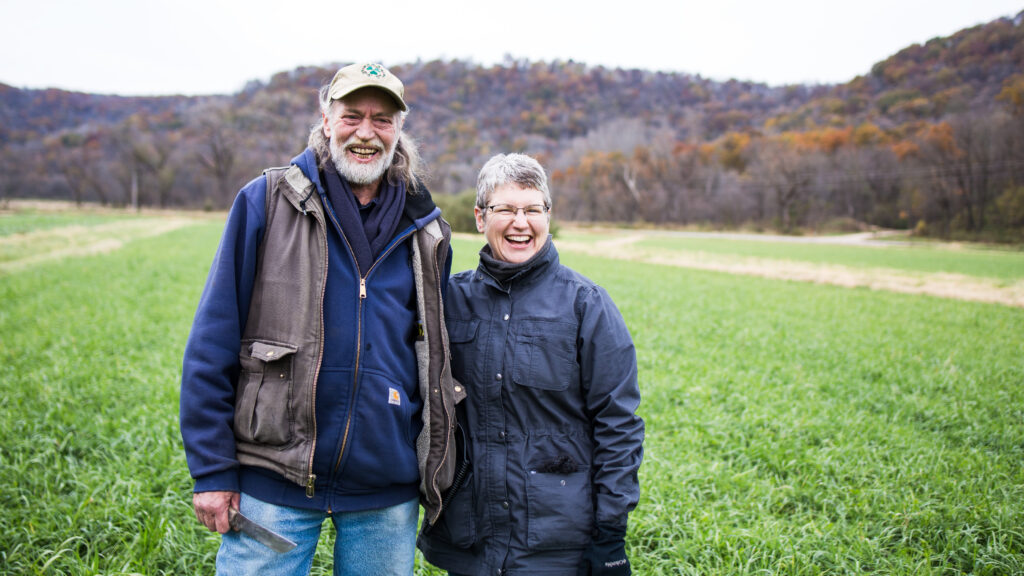
For many of us, spring is a time to open the windows and get outside a bit more. Perhaps, if we’re feeling ambitious, spring is a time for a bit of house cleaning and garden prep. But springtime on the farm is all about getting ready for the upcoming growing season. Between repairing equipment and planting seeds, there’s no shortage of work that needs to get done to ensure a successful harvest. We caught up with Richard de Wilde of Harmony Valley Farm to catch a glimpse everything going on during springtime on the farm.
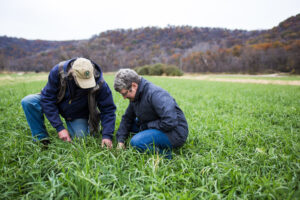
Located near Viroqua, in Wisconsin’s fertile and stunning Driftless Area, Harmony Valley provides some of the first local produce of the spring to the co-op. If you’ve purchased radishes or asparagus in May, chances are good you’ve enjoyed Richard and co-owner Andrea’s delicious produce. They also provide wild ramps sustainably harvested from the wooded parts of their farm. Richard brings decades of experience to his role as head farmer. In fact, 2023 marked his 50th year as an organic farmer, having begun his first foray in Eagan in 1973. But farming wasn’t always his ambition. Growing up in a family of farmers, Richard initially had other plans. “I went to college to get an education and make big money.” But the tug of returning to his roots became too strong. “I just decided that I really missed gardening and growing and said that’s what I want to do.”
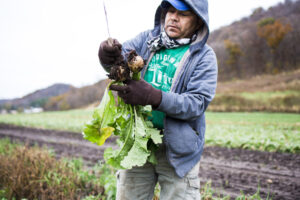
For Richard, the decision to farm organically was never in doubt. His grandfathers, like many farmers in the past, used organic and regenerative practices by default. But his own father experimented a bit with modern and conventional practices. “He got into chemical weed sprays for quite a number of years and then decided it was a bad deal. He had health problems and my uncle had health problems … probably related to spraying chemicals. So then the whole family kind of came around to growing and eating only organic.”

Harmony Valley upholds those organic standards today. In addition to being certified by the Midwest Organic Services Association (MOSA), and the Real Organic Project, they experiment with holistic land management to promote soil health. For example, Richard uses a cover cropping method that blends green manure, rock powder, and compost that supports fertility without the need for commercial amendments. He also reduces the need for organic pesticides by providing habitats for beneficial wildlife like bats and song birds.
That spirit of ingenuity carries over into Richard’s maintenance of the farm’s equipment. “We have a project to build a new lifter that goes behind the tractor to lift deep roots of daikon [radish] and burdock, a new design that I think will work better than something we could buy.” Winter and early spring are the perfect time to tackle these projects. That’s also when Richard takes in-depth inventory on all their equipment to avoid unpleasant surprises when it’s time to plant and harvest. “When the weather’s ready to get out there and plant, that’s not the time for tinkering or discovering a bad wheel bearing. We’re big on being ready, you know?”
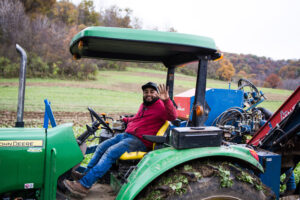
But the most important duty in March and April is growing seeds. Richard usually places his orders in December. That order will include all the varieties of cilantro, shallots, and spinach their customers love, but also a selection of new varieties that Richard will test on the farm. “We try new varieties as they come on the market because sometimes old favorites disappear and it’s time to make a replacement.” They’ll test them out in their soil to see if they thrive. If they do well, they’ll send them out to their 1,500 CSA customers. If a new variety proves to be a hit, they may add it to the crop for the following year.
Once the crop for the year is decided, seeds are planted into small pots in the nursery greenhouse using a vacuum seeder. This automatic device can seed 120 trays of pots per hour. The pots themselves are packed with a hand-mixed blend of potting soil, compost, and coconut fiber. Once seeded and lightly watered, the flats are placed on warming tables that keep each pot at the perfect temperature for germination. That means a tray of onion seeds can be kept at the optimum 76° while tomatoes, which like things a bit warmer, can be set at 85°. That climate-controlled environment has benefits for Richard as well: “It’s a pleasant time working in a heated greenhouse when it’s winter outside!”
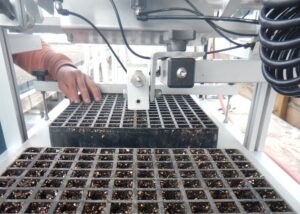
Before they face the outdoors, the seedling must be toughened up a bit. This process, known as hardening, is done by gradually acclimating them to colder temperatures in the cold frame greenhouse. “It’s closer to what those seedlings are going to face when they get to the fields. You want a nice hard, tough plant rather than a soft, spoiled plant.”
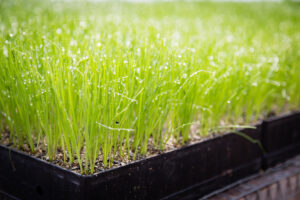
One of the biggest challenges of planting seeds is timing. “You want to time it so they’re just at their prime when the field is ready for them.” While experience and knowledge are vital, part of this process is always up to chance. A particularly wet spring or a late season cold snap can delay transferring seedlings into the fields. If they’re delayed too long, the plants will grow too big in their pots and will have a harder time acclimating to being outside. So hopefully, come April, the fields are ready for them.
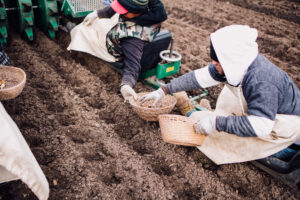
Some of Harmony Valley’s earliest spring is actually planted the prior season. Cold-resistant plants like cabbage, sunchokes, and onions, can be cut back to the roots in fall and left in the ground. This process is called overwintering and allows for very early season harvesting.
If everything goes (mostly) according to plan, springtime on the farm will transition into a bountiful summer and fall. Look for produce from Harmony Valley’s harvest at the co-op all season long!
Interested in growing your own veggies from seed this season? Check out our guide for when to plant seeds indoors to guarantee the best results! Want to learn more about the folks providing you with fresh, delicious produce at the co-op? Meet the local farmers growing your favorite apples, tomatoes, carrots and more.
